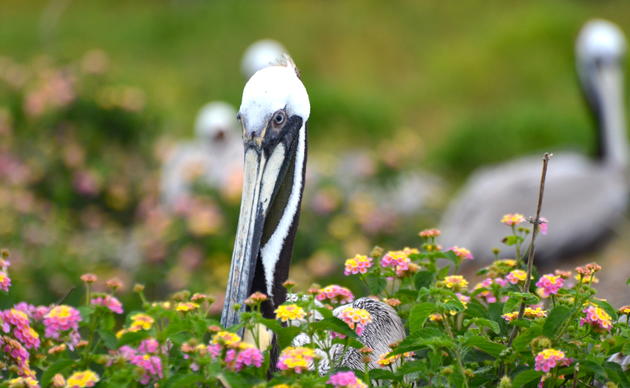Did you know that birding is the fastest growing leisure sport in America? According to US Fish and Wildlife Service, there are currently 51.3 million birders in the United States alone, and this number continues to grow!
Get Started Birding
You might be surprised to discover how many bird names you already know, but whether it's five or 50, you can take your knowledge to the next level with the tips on this page and a birder's most important tools: binoculars, a field guide, a notebook, and practice!
Become a note taker: When you see a bird you don't recognize, try to jot down a few notes or sketch the bird before it flies away. If you don't take notes, you may find you've forgotten important details when you are looking at your field guide later. Taking photographs also gives you something to look at later, of course, but writing notes or sketching a bird by hand will force you to pay attention to details of the bird's appearance and behavior while you are watching it.
Learn some bird anatomy: Birds come in an amazing variety of colors, shapes, and sizes, but they generally all share the same basic body parts, which are identified on the diagram on this page. Try to familiarize yourself with the names of these body parts and feather groups because field guides use them to describe each bird and make distinctions between similar species. Knowing basic bird anatomy will also help you take better notes and draw better sketches.
Judge size and shape: Size and shape are important clues about a bird's identity, but they can also be hard to determine, especially when looking at a bird from a distance through binoculars. Try to get a sense of the bird's size in comparion to more common or familiar birds (especially if they are nearby) – larger than a robin but smaller than a crow, for example. Shapes are also important to note, especially the shapes of beaks, wings, and tails, which often tell you a lot about a bird.
Study behavior: Take a moment to notice how the bird is acting. Is it alone or in a group? Is it stalking, standing still, or flitting actively? How does it fly? What is it eating? Some birds are easily recognized by their actions alone.
Be aware of variations: Many birds look very different in male and female plumage, adult and immature plumage, and summer and winter plumage, so if you see something different, first check to see if it is a different plumage of a familiar species. Beyond that, birds can also show unusual plumage variations including albinism, which can make them partly or entirely white. And on top of that, birds drop their feathers and regrow them at certain times of year, temporarily changing how long their tails look, for example.
Listen, listen, listen: Listening for the songs and calls of birds can help you find birds and also identify them, even before you see them. And some birds that look similar to each other have very different voices, so paying attention to how they sound can help you separate the confusing species. As you become familiar with the common songs and calls, you'll start to be able to pick out things that sound different. Many different CDs and mobile apps (including Audubon's mobile apps) include recordings that can help you learn songs and calls too.
How you can help, right now
Join Audubon Texas Today
Becoming a member supports our local work protecting birds and the places they need.
Consider a Legacy Gift for Texas
Planned gifts and bequests allow you to provide a lasting form of support to Audubon Texas.
Subscribe to Our Newsletter
Subscribe to our newsletter for updates about Audubon Texas's conservation work, and news about our activities and local events.




